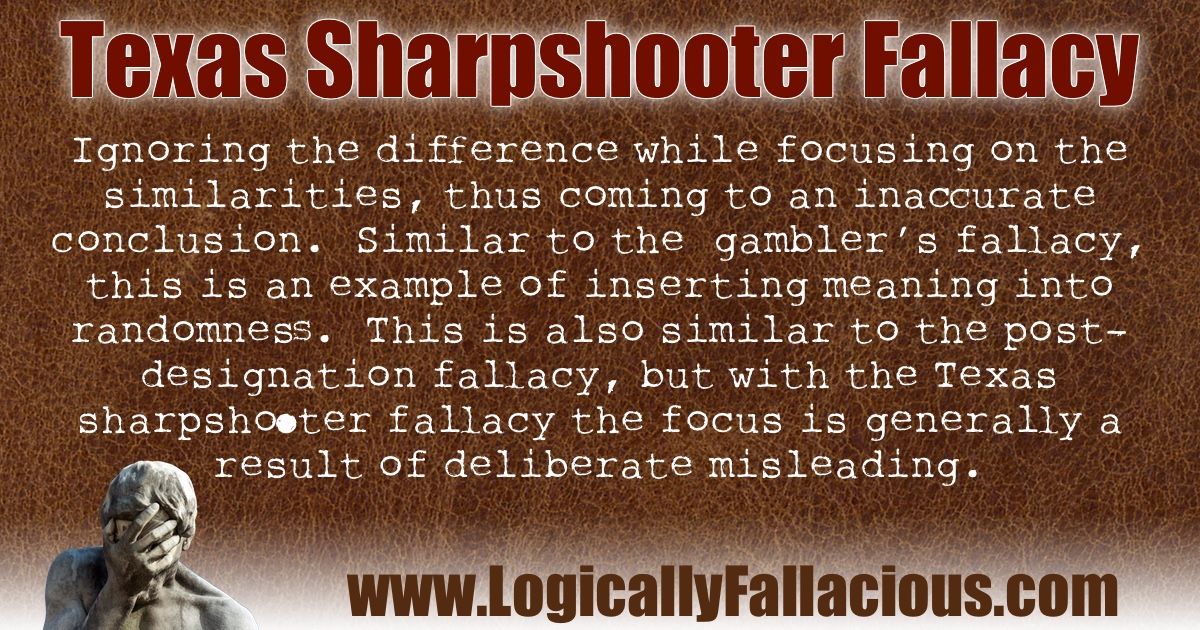(also known as: clustering illusion)
Description: Ignoring the difference while focusing on the similarities, thus coming to an inaccurate conclusion. Similar to the gambler’s fallacy, this is an example of inserting meaning into randomness. This is also similar to the post-designation fallacy, but with the Texas sharpshooter fallacy the focus is generally a result of deliberate misleading.
Logical Form:
X and Y are compared by several criteria.
A conclusion is made based on only the criteria that produce the desired outcome.
Example #1:
The “prophet” Nostradamus wrote about 500 years ago:
Beasts wild with hunger will cross the rivers,
The greater part of the battle will be against Hister.
He will cause great men to be dragged in a cage of iron,
When the son of Germany obeys no law.
Surely he must have had some vision of Hitler!
Explanation: When you focus on just that prediction, then it might seem that way, but realize that Nostradamus made over 1000 “predictions”, most (all?) of which are vague nonsense. Given that many predictions, it is statistically impossible NOT to match at least one with an actual event. Again, if you ignore the noise (the predictions that do not make any sense), it looks amazing. By the way, “Hister” is the Latin name for the Danube River.
Example #2:
SuperCyberDate.con determined that Sally and Billy are a great match because they both like pizza, movies, junk food, Janet Jackson, and vote republican.
Explanation: What SuperCyberDate.con did not take into consideration were the 245 other likes and dislikes that were very different for both Sally and Billy—such as the fact that Billy likes men.
Exception: It's never a good idea to ignore the differences in the data while only focusing on the similarities.
Fun Fact: The name “Texas sharpshooter fallacy” comes from the idea that someone could shoot randomly at a barn, then draw a bullseye around the largest cluster, making it appear as if they were a sharpshooter.
